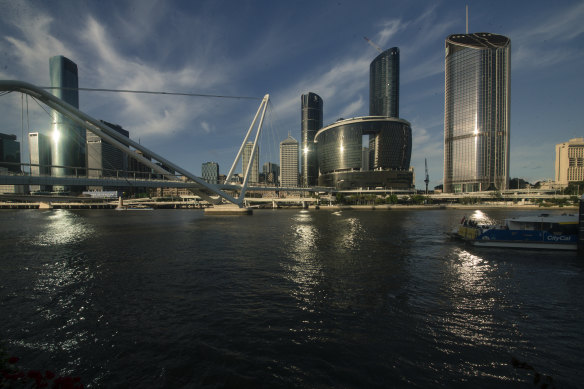How much do you need to borrow to buy in Brisbane?
By Sarah Webb
The great Australian dream of owning a home has slipped further out of reach for Brisbane’s first home buyers, with new data showing single average income earners would need a $400,000-plus handout from the bank of mum and dad to afford the average house.
Even for a unit, they would need almost a $130,000 top-up after securing a loan and saving a standard deposit.
As for low-income earners – tell ’em they’re dreaming.
The data, from CoreLogic and Canstar, also shows the typical Brisbane house is valued at $966,382 with the median unit value at $653,325. Across the city, only five suburbs remain where a single average income earner could afford a house without major outside help.
Using an average annual gross income of $100,017, based on ABS average weekly earnings, estimated borrowing capacity from Canstar research was compared to median home values for the city and each suburb, on CoreLogic data.
Even after taking out a loan and saving a deposit, the data showed the shortfall for a single average-income earner looking to buy a median house in Brisbane is now $442,632. For units it’s $129,575.
A dual average-income couple would still be short $233,618 for a house.
CoreLogic head of Australian research Eliza Owen said the figures revealed the chasm growing between income and house prices.
“A low-income single buyer can only afford a $350,000 home and there’s now just one suburb in Brisbane where they could potentially get a unit. Even high-income earners can only access 90 per cent of the market,” she said.
“This reflects just how much prices have surged across Brisbane over the past two years, and it really entrenches the differences between the haves and the have-nots.”
Owen said it could push younger buyers away from Brisbane while spawning a generation of long-term renters.

Brisbane property prices have soared.Credit: Glenn Campbell
While the data reflects just how much the bank of mum and dad is required to bridge the shortfall facing buyers, Owen said that fact alone deepened the wealth gap.
“Property itself is one of the big wealth dividers. And this is changing the way we live. We’re seeing more share-houses forming and more groups of people buying together who are not family,” she said.
“I expect we’ll also see more buyers moving to smaller dwellings or shifting to regions further afield.”
PRD Nationwide chief economist Dr Diaswati Mardiasmo said the figures painted a stark picture of the colossal property price growth Brisbane had collected since the pandemic. She warned buyers needed to adjust their expectations and explore alternative pathways to homeownership to stay ahead.
“I think a lot of first home buyers still have it in their head that Brisbane is affordable. They think a house should cost $500,000 or $600,000, but that’s just no longer the case.
“And if you can’t access the bank of mum and dad to help you then you need to be exploring other pathways and opportunities.”
Jayden Vecchio, mortgage broker at Hunter Galloway, said 13 consecutive interest rate hikes within 15 months had played a key role in slashing borrowing capacity.
“Since those rate rises, borrowing capacity has reduced by 40 per cent. And what’s not helping our first home buyers is the 3 per cent buffer also currently required,” he said.
“It makes it hard. And we’re seeing more buyers either needing support from mum and dad or even multi-family scenarios.
“I’ve had cases of parents selling the family home and then buying a dual living property with their kids so they can pool resources.
“And banks now have more products for these collaborative approaches to help people get into the market.”
Vecchio said for buyers without family support, rentvesting – buying in more affordable areas and renting where you want to live – was an option, as well as utilising the government’s super saver scheme and grants.
CoreLogic and Canstar’s dataset showed Springfield, Woodridge, Redbank and Goodna remain some of the last affordable suburbs for buyers. Of those, Woodridge unit values are $376,703 and houses are $618,653.
That relative affordability has driven first home buyer activity across each of those pockets, said Ray White Springfield’s Cameron Campbell, with bargain hunters still able to nab a four-bedroom home for under $750,000.
“It won’t be like this for much longer but right now it’s the place to go,” he said.
“While no one has a crystal ball, I think people are realising the market is getting out of reach, and I’m seeing a lot of first home buyers trying to get in before prices rise further.”